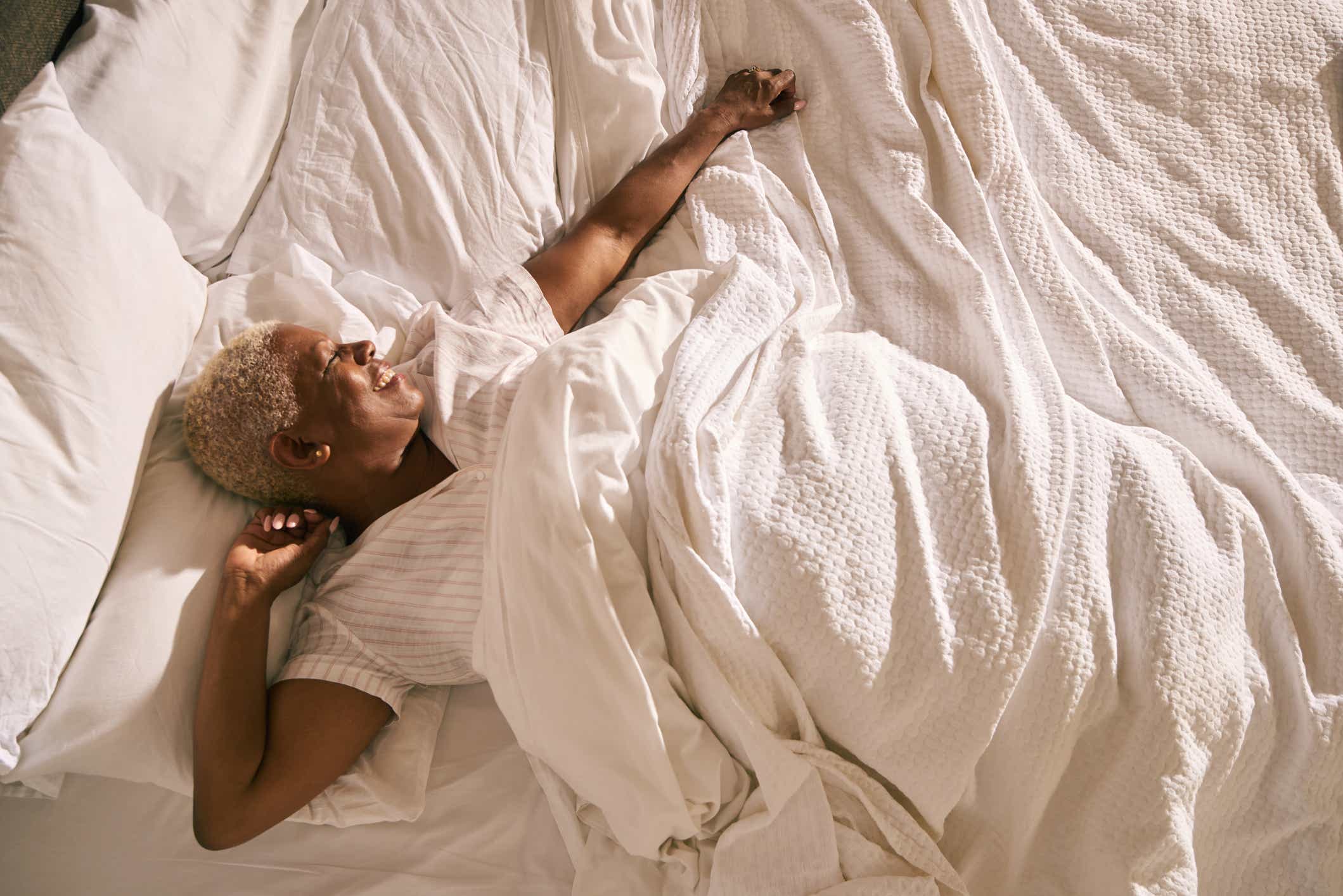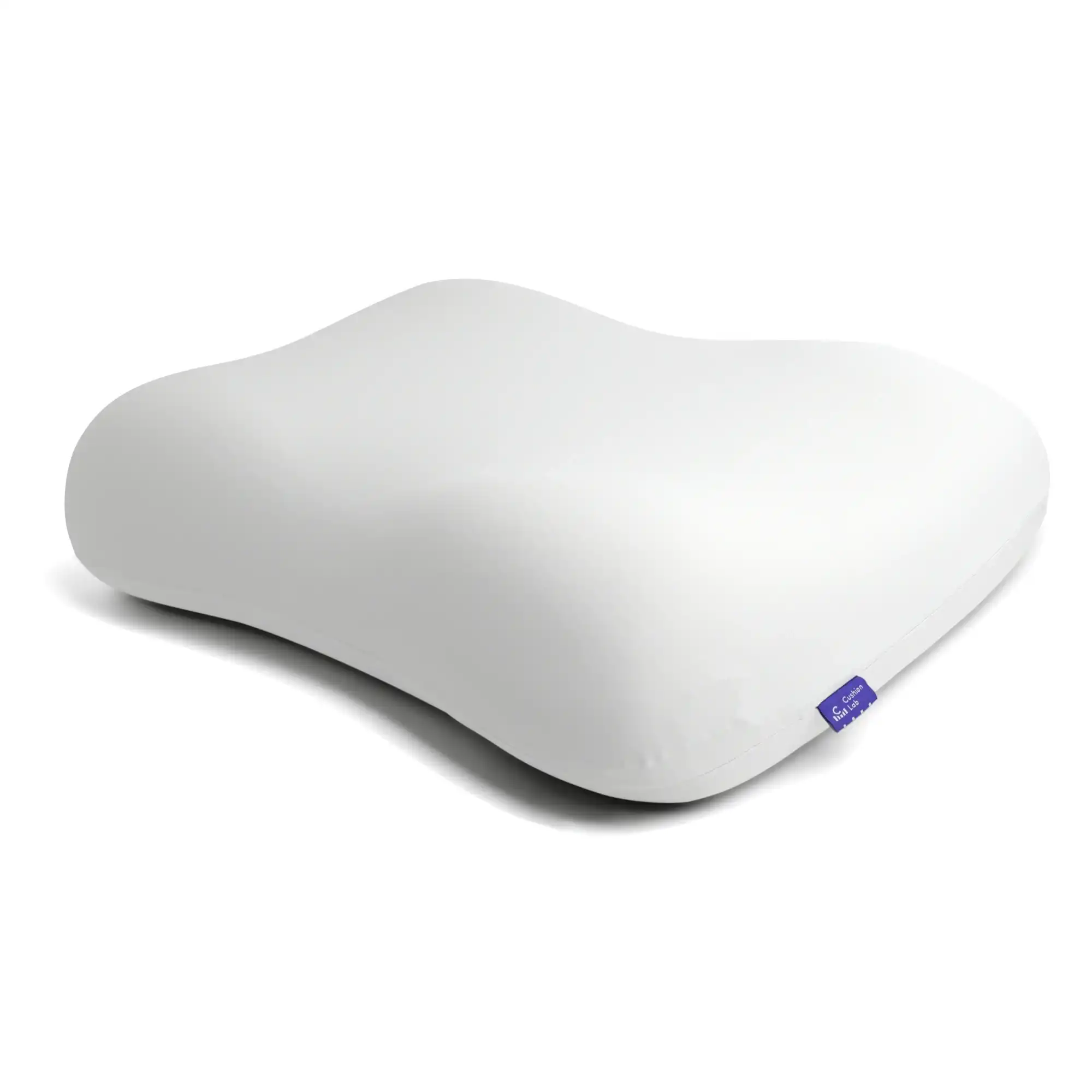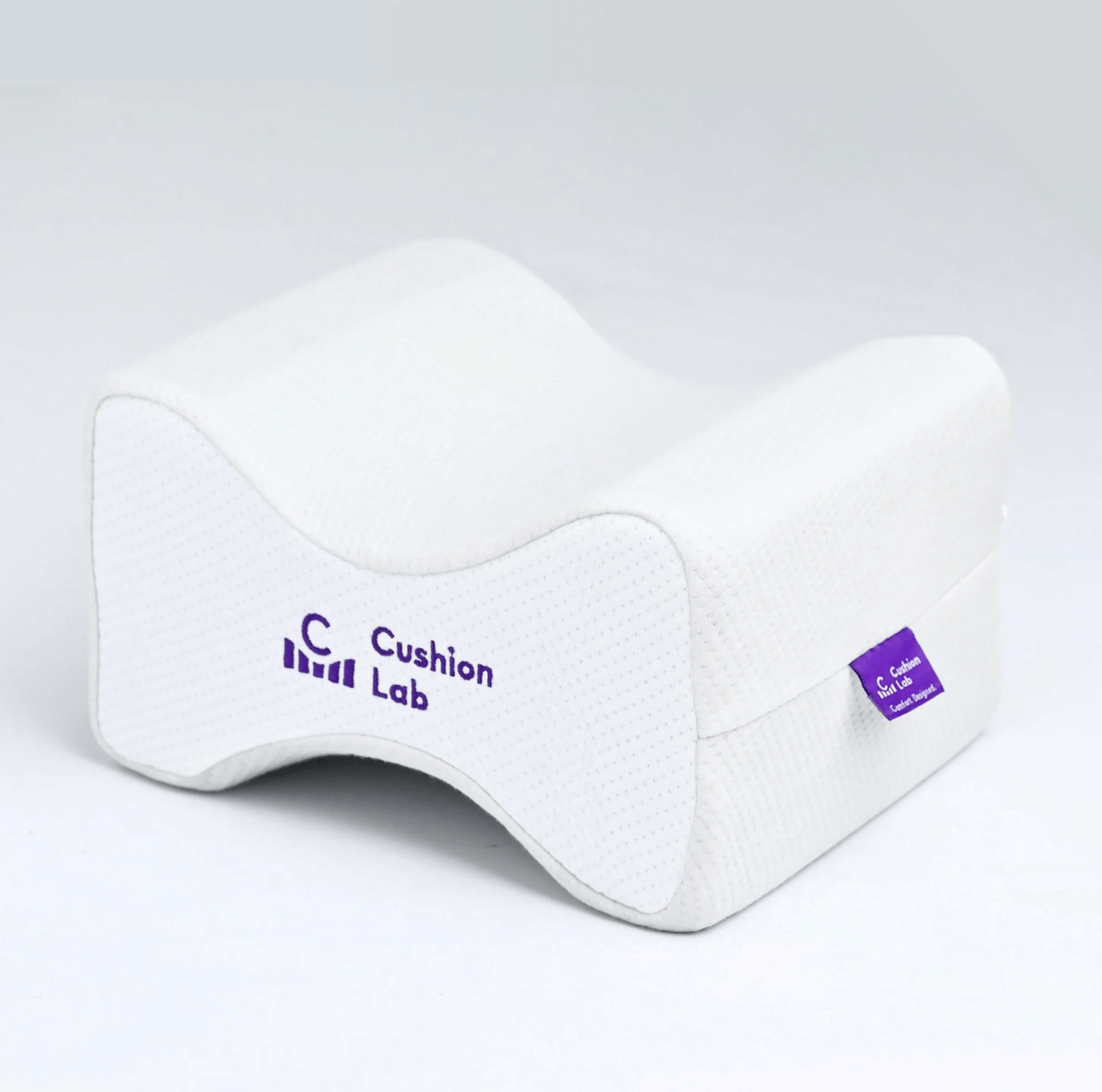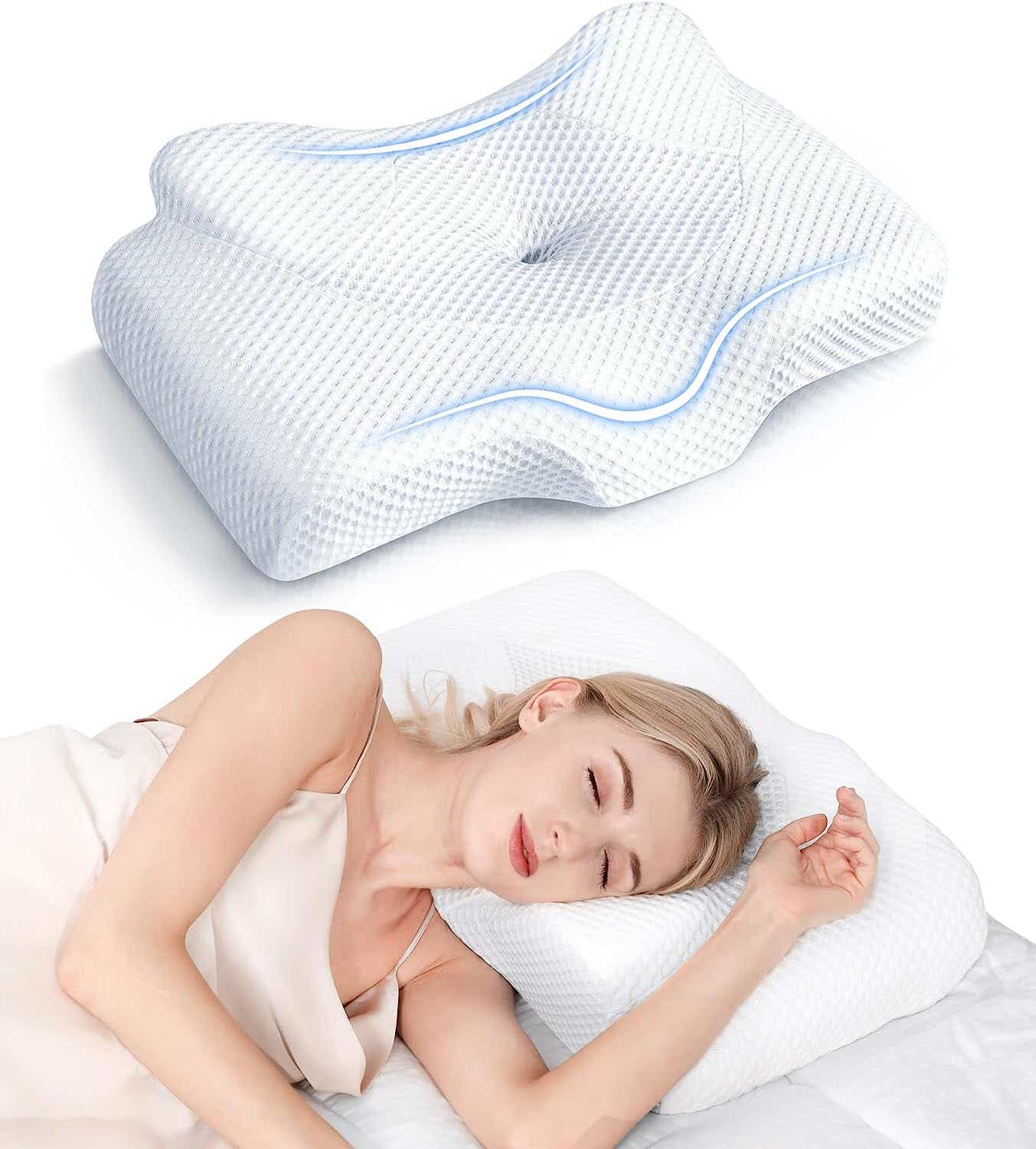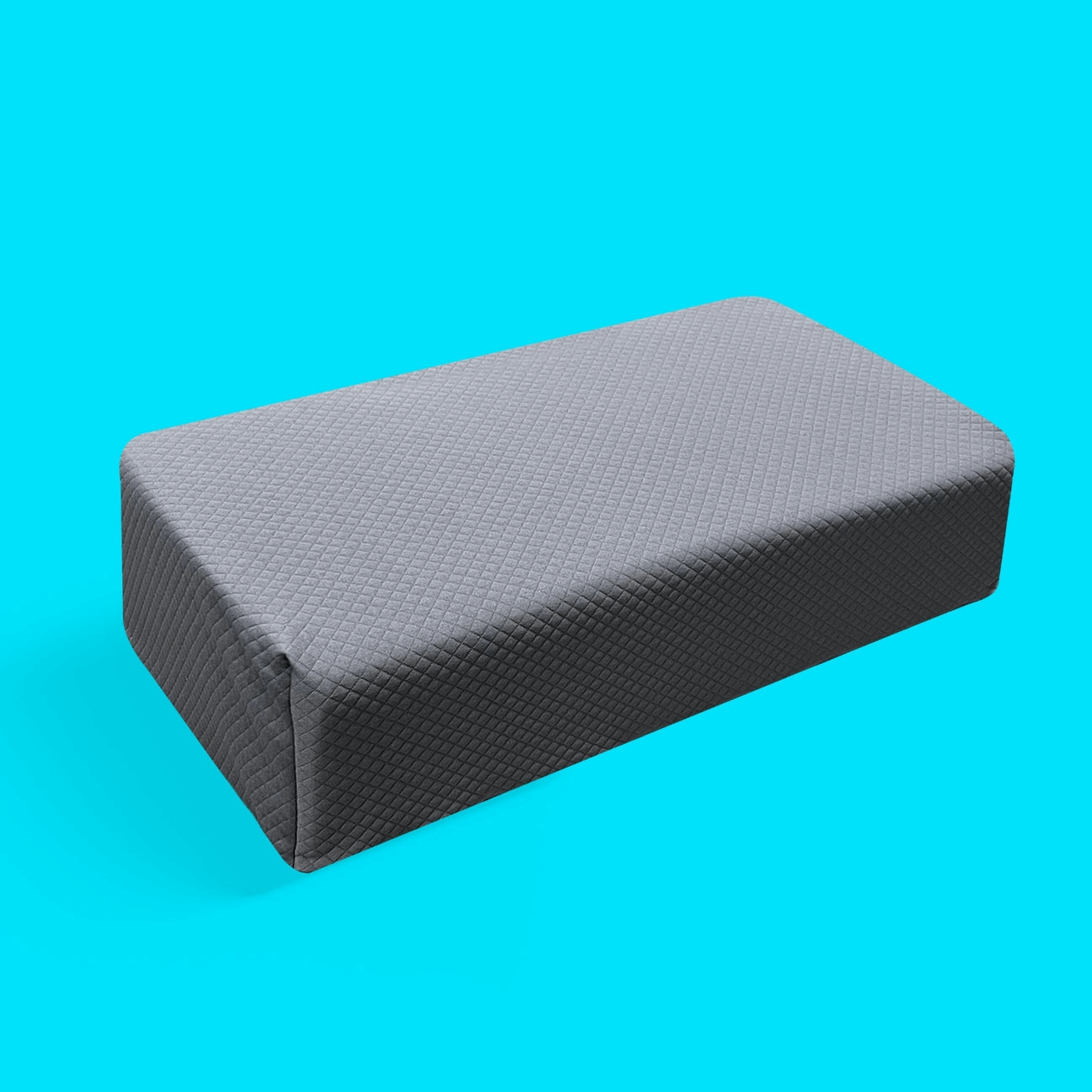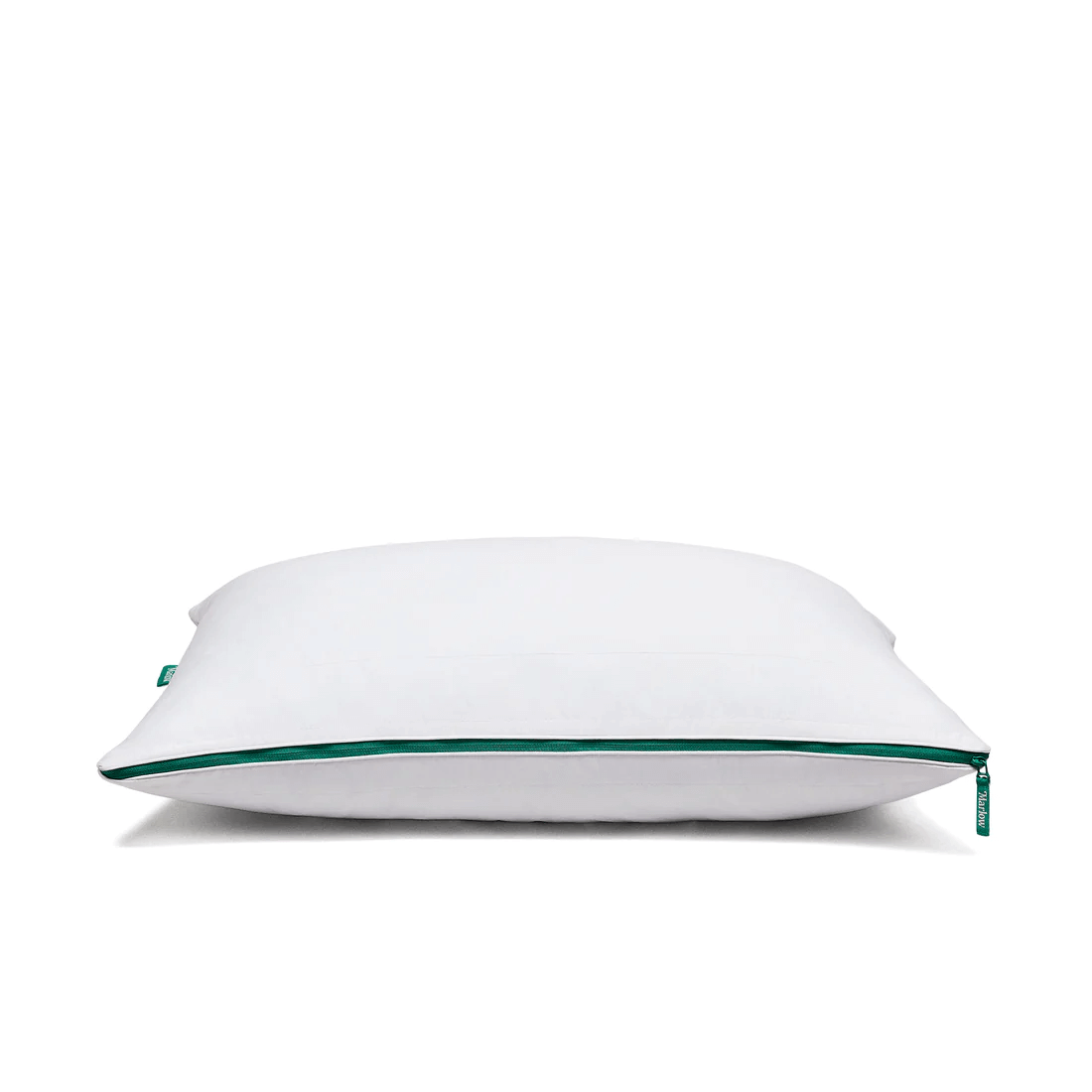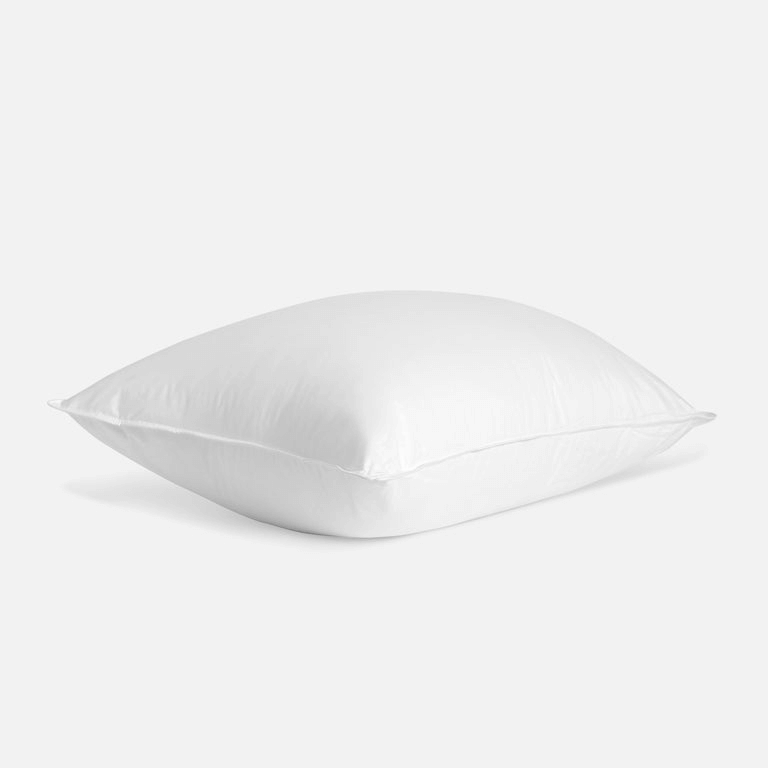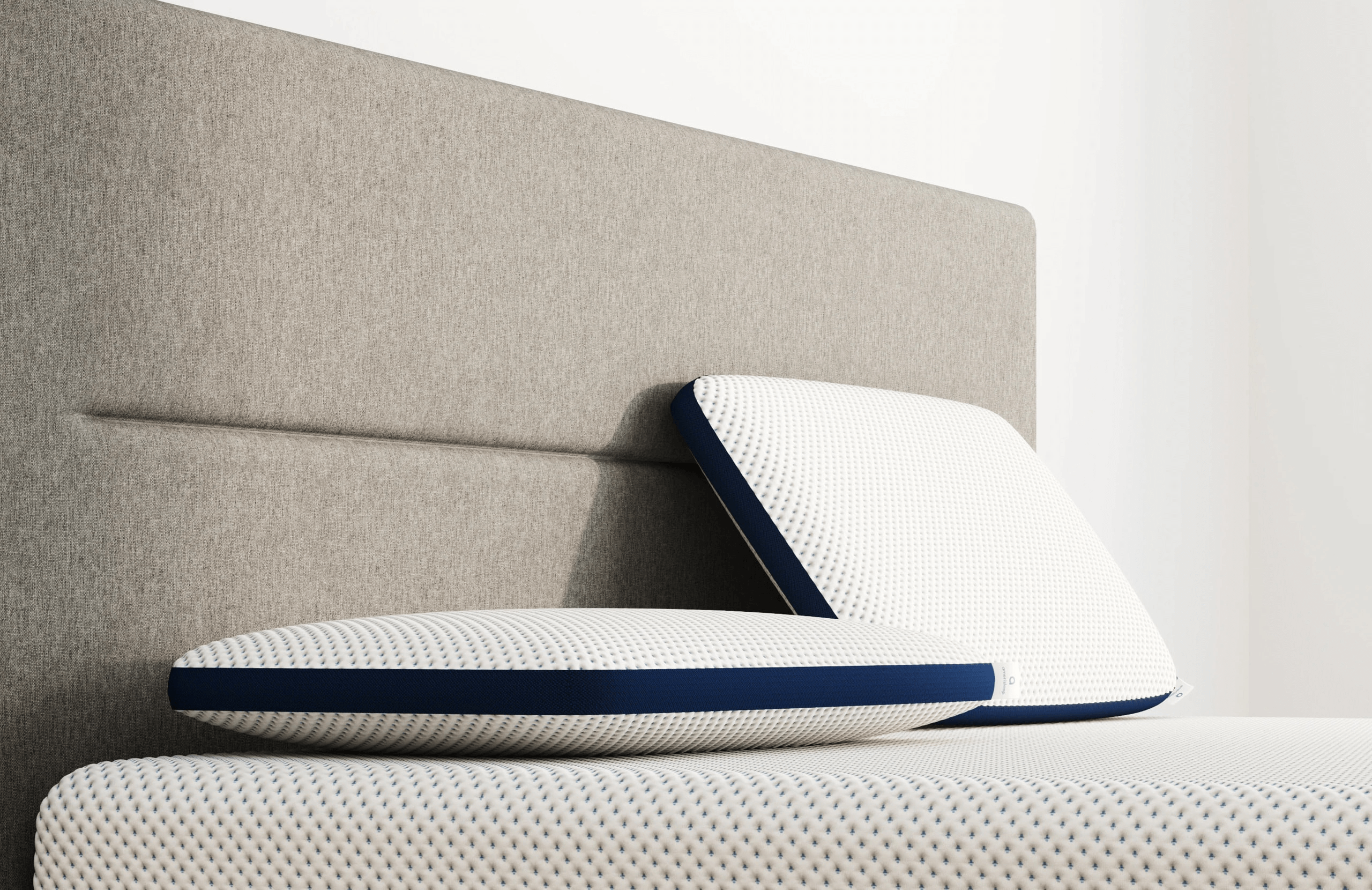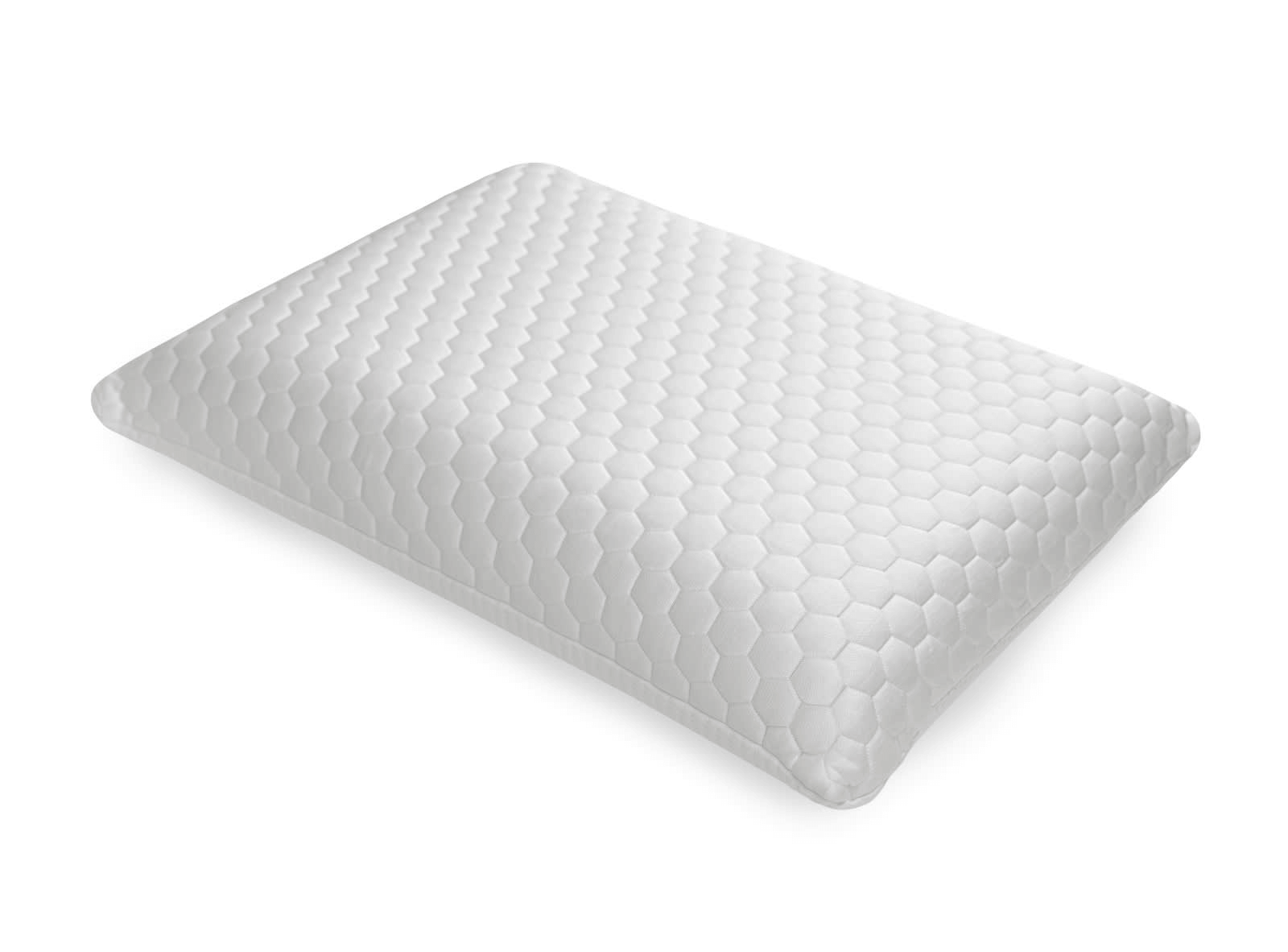Toss, turn, repeat: If you’ve got the wrong pillow, this probably describes your evening routine, where falling asleep is a nightly battle. You might think that a mattress is the most important part of your bed setup, and while it is a big factor in maintaining your sleep hygiene, the correct pillow is key to getting proper neck and spinal alignment, especially if you’re a side sleeper.
Finding the right pillow can be a costly endeavor, which is why we went straight to an expert for advice. Jordan Burns, MS, DC, specializes in spinal health and serves on Amerisleep’s expert review board; he provided us with insight on how to find a dreamy pillow that suits your needs, and even enlightened us on why sleeping on your side isn’t actually all that bad for you.
Are there any benefits to sleeping on your side?
Side-sleeping gets a bad rap. We often hear that sleeping on your back is the ideal, because it promotes proper spinal alignment and can help with acid reflux (especially if your head is propped up). Some also swear that sleeping on your back prevents wrinkles, since your face isn’t smashed into a pillow for eight hours straight.
However, those who suffer from sleep apnea or snoring may find relief from side-sleeping, because it "can help keep your airways open and reduce breathing obstructions,” Dr. Burns explains. “For individuals with acid reflux or GERD (gastroesophageal reflux disease), sleeping on the left side can help reduce symptoms by keeping the stomach below the esophagus.”
But it’s still crucial to maintain proper positioning while lying on your side. “Side-sleeping can also potentially impact blood circulation, especially if the arm is trapped under the body or head,” says Dr. Burns. “To improve circulation, it's essential to maintain a neutral sleep position and avoid compressing any body part.” This means you shouldn’t have to keep your arm under your pillow to get adequate head and neck support. In order to keep your head, neck, and spine in a neutral position, you need a pillow that properly supports you, no matter the position you doze off in.
What’s the best type of pillow for side-sleepers?
Part of finding a good pillow is personal preference, but another part is finding one that keeps your head from sinking down, which can place your neck at an awkward angle. (That's what stiff-neck nightmares are made of.) Instead, choose a pillow that: 1) has a decent amount of height to fill the space between your shoulder and ear, and 2) is firm enough to keep your head from sagging. In a perfect sleep state, your bod should be positioned in a straight line from the top of your head, through your neck and spine, and all the way down to your hips.
Dr. Burns prefers memory foam pillows, because they conform to the shape of your head and neck, providing more personalized support. However, side sleepers tend to generate more body heat in the shoulder-neck region, so try to find an option that’s breathable to keep you from sweating too much. And don’t worry — we have a couple of suggestions below that’ll keep you cool all night long.
Do side sleepers need knee pillows?
“When side-sleeping, the top leg may pull down on the hip, causing misalignment of the spine and leading to discomfort or pain in the lower back, hips, and knees,” Dr. Burns says. “Placing a pillow between the legs helps maintain a neutral position for the hips and spine, reducing pressure on the joints and promoting better sleep posture.” Memory foam knee pillows have dips on either side to fit your legs comfortably, but Dr. Burns says that a body pillow can offer similar support.
Another hot tip from Dr. Burns is to place a small pillow or rolled towel between your waist and the mattress, to reduce strain on your back and hips. “When side-sleeping, the waist area may not receive adequate support, leading to a slight sag in the spine, which can cause discomfort over time,” he explains. This can be highly effective for those who experience lower back discomfort.
What other products are good for side-sleepers?
Willing to invest in more than pillows for a premium sleep experience? Dr. Burns recommends looking into mattress toppers, lumbar pillows, weighted blankets, or even replacing your mattress entirely. He finds that memory foam, latex, and hybrid mattresses tend to provide the best support for those sleeping on their sides, but it’s up to you. “Ideally, the mattress should promote proper spinal alignment, alleviate pressure points, and contribute to a restful night's sleep.”
The final consensus
We know we've offered up a lot of info, so here are the down-and-dirty basic facts: If you sleep on your side, you’ll want to invest in a pillow that supports your head, fills the space under your neck between your shoulder, and ear, and doesn’t cause your spine to sag. For hot sleepers, look for a breathable pillow to keep you cool. Memory foam offers the best customizable support, but a firm down pillow can do the trick, too.
Ready to find your Goldilocks-level pillow? Here are the expert-approved options.
The Best Pillows for Side Sleepers
Cushion Lab Deep Sleep Pillow
Cushion Lab
It’s no secret that we love Cushion Lab’s Deep Sleep Pillow, well, deeply. If you haven’t already read our glowing review yet, here’s a quick synopsis: It’s made from firm memory foam and fitted with a cooling cover, with two support options depending on the side you choose to sleep on. One end is higher than the other for those who want a loftier lift, while the lower side is great for those nights when you find yourself shifting from side to back to stomach.
Cushion Lab Side Sleeper Knee Pillow
Cushion Lab
Need some extra support below the waist? Place this memory foam piece between your knees. The built-in channels support your legs and relieve pressure from your hips and spine — and this cushion is available in two sizes, depending on how much support you require.
Osteo Cervical Pillow
Amazon
This pillow may look funny, but the 8,500 five-star reviews on Amazon prove it's nothing to laugh at. Its unique shape curves around your shoulders, supports your neck, and has a lower dip for your head to comfortably sink into. Thoughtfully designed by orthopedic surgeon Andrew Hecht, MD, it promises to help relieve the achy pressure points that may come with sleeping on your side.
Eli and Elm Side Sleeper Pillow
Eli and Elm
Sometimes the issue isn't your neck, but shoulder discomfort. If that describes you, you're welcome: We found a pillow specifically designed to address this issue. A U-shaped curve at the base of this pillow goes around your shoulder rather than smushing into it, and the pillow itself can be adjusted by either adding more latex-polyester filling or removing some.
Pillow Cube Side Cube
Pillow Cube
This cube may look uncomfortable, thanks to its sharp edges and boxy shape, but it’s surprisingly cozy. The high loft fills in that awkward space between your shoulder and ear, and the memory foam core is made with a cooling carbon material to keep you from overheating throughout the night. The best part? This pillow is extra-wide, so there’s room for two, should you and your partner like to spoon all night long.
Bearaby Cuddler Pillow
Bearaby
“Body pillows are longer and can support the entire body from head to toe,” Dr. Burns says. You can position this Bearaby pillow at your head to support your neck and weave it around your body between your knees, thanks to its extra-long, cylindrical shape. “This provides support not only for the hips but also for the upper body," says Dr. Burns, "reducing strain on the shoulders and promoting a more comfortable sleep position.”
Marlow The Pillow
Marlow
Turns out you can have it all when it comes to a pillow. Fit with two side zippers that adjust its firmness, the Marlow pillow can go from soft to dense in an instant. It’s filled with cooling shredded memory foam that conforms to your body’s shape, and you can choose between three lofts by adjusting the built-in zippers that compacts its filling. Zip both sides for ultimate firmness, unzip one for medium support, or undo both for a cushier pillow.
Brooklinen Down Pillow
Brooklinen
Memory foam provides support because the dense material conforms to the unique head and neck shape of each person — but a high-quality down pillow can actually do a similar job. Opting for one with extra fill ensures that the space between your ear and shoulder will be supported, and the compact down will cradle your head, keeping your spine in beautiful alignment.
Amerisleep Dual Comfort Pillow in Mid Loft
Amerisleep
This dual-sided pillow comes in handy if you tend to swap sleeping positions throughout the night. With a firm and soft side, simply flip this pillow over to find your preferred level of support, depending on your mood. Both sides are made from perforated memory foam to allow for maximum airflow.
Helix GlacioTex Cooling Gel Pillow
Helix
Designed with a cool-to-the-touch cover that pulls heat away from the body, this gel pillow is great for those who run hot. It comes in a 5.25-inch high loft for side sleepers, and the memory foam core is infused with copper to further promote cooling while you sleep.
Brooklyn Bedding Talalay Latex Pillow
Brooklyn Bedding
If you find that your head sinks into foam pillows more than you’d like, latex may offer more support. This one from Brooklyn Bedding has perforations throughout to allow for airflow, and it won’t ever lose its shape, thanks to the dense material it’s made from. It comes in both low and high lofts, the latter of which is recommended for side sleepers.
Sweet Zzz Buckwheat Pillow
Sweet Zzz
Prefer a firm pillow but don't want something that feels like a brick? Buckwheat hull filling may be the solution you've been looking for. Buckwheat hulls, which are the hard shells that house seeds of the buckwheat plant, don't hold or reflect heat, making it an amazing filling for those who sleep hot. The hulls are hard, but they won't poke you through a pillowcase, and they act similarly to foam beads, adjusting to the shape of your head and neck. This pillow from Sweet Zzz uses them as the filling, the amount of which you can adjust to your liking for optimal support.







